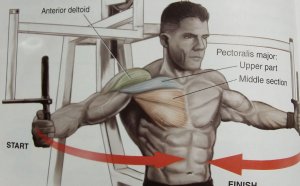
Good exercise Routines

Designing your fitness plan
If exercise is so good for us then why do we find it so hard to exercise regularly? It wasn't always that way. In grade school, you probably couldn't wait for recess. It was a time to walk, run, jump, and be outside. You were exercising and enjoying every minute of it. Now it's more of a chore. But it doesn't have to be that way if you focus on activities you enjoy and a routine that's tailored to your needs.
So how do you create such an exercise routine? Find a blend of activities you enjoy and a schedule you can stick with over the long haul. Start out gradually, set realistic goals, and reward yourself for accomplishments along the way. In short, your fitness plan should give you recess without the bell.
Plentiful and well-established science supports the benefits of aerobic and strength training, as well as balance training for older adults. Flexibility and relaxation exercises are also important components of an enjoyable and effective fitness plan.
Aerobic exercise
Often called cardio or endurance activities, aerobic activities are great for burning calories and paring down unwanted fat. They consist of activities that require large muscles to repeatedly contract and relax: think of walking, biking, running, and swimming, for example. This temporarily boosts your heart rate and breathing, allowing more oxygen to reach your muscles and tuning up cardiovascular endurance. These are activities that are associated with lower risk for many diseases and lengthening lifespan. Make aerobic exercise the centerpiece of your fitness program, since the bulk of research on disease-quelling benefits of exercise revolves around cardiovascular activity.
How much
Current guidelines for physical activity recommend accumulating a weekly total of at least two–and–a–half hours of moderate aerobic activity, or one hour and 15 minutes of vigorous aerobic activity. (Note: If you prefer a mix, 10 minutes of vigorous activity equals roughly 20 minutes of moderate activity.) Raising your weekly goal to five hours of moderate activity, or two–and–a–half hours of vigorous activity, nets additional health benefits. A single exercise session should last at least 10 minutes.
Get started
Walking is usually safe for any age or level of fitness, and can easily be adjusted to a comfortable speed. It doesn't jar joints or raise your heart rate to dangerous levels. Expanding a walking program is simple—add time, distance, or hills to improve endurance. If you prefer another aerobic activity, though, feel free to substitute it. Otherwise, follow these tips to get the best workout from your walks:
Strength training
Strength or resistance training, which typically employs equipment such as weight machines, free weights, and resistance bands or tubing, protects against bone loss and builds muscle. It also improves your body’s ratio of lean muscle mass to fat. It, too, deserves an important place in your exercise routine.
Technically, strength or resistance training takes place any time your muscles face a stronger-than-usual counterforce, such as pushing against a wall or lifting a dumbbell. Using progressively heavier weights or increasing resistance makes muscles stronger. Aside from toning you, strength training provides the functional strength you need to do everyday activities—lifting groceries, climbing stairs, rising from a chair, rushing for the bus—with ease.
Current guidelines recommend strengthening exercises for all major muscle groups (legs, hips, back, chest, abdomen, shoulders, and arms) twice or more weekly. One set per session is effective, though two to three sets may be better. Repeat each exercise eight to 12 times. Your body needs at least 48 hours for recovery and repairs between strength training sessions.
These tips for safe strength training will help you get the most from your workouts:
INTERESTING VIDEO



Share this Post
Related posts
Chest Workout for definition
Has never been complex, he always focused on the basics. So if you want to get a big chest, we prepared you a workout inspired…
Read MoreGym Regimen
You ve decided it s time to start exercising. Congratulations! You ve taken the first step on your way to a new and improved…
Read More









